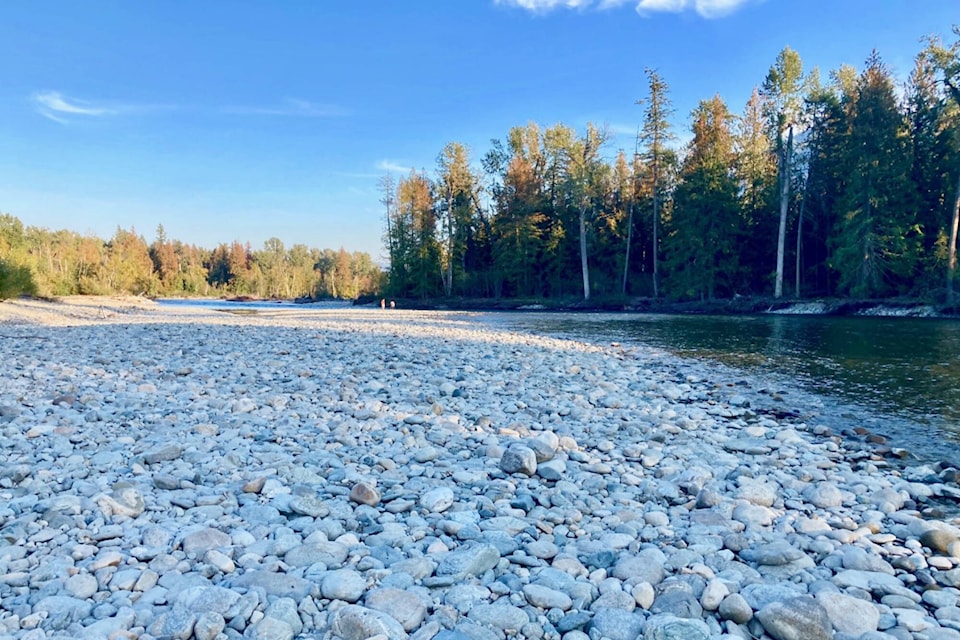By Jim Cooperman
Special to the Observer
While it was wonderful to see the local Secw茅pemc communities take the lead for this year鈥檚 Salute to the Sockeye opening ceremonies at the Adams River, the celebratory mood was dampened because the salmon were not yet in the river.
As the climate-change fueled hurricane ravished Florida, the current impacts in B.C. and elsewhere are the unseasonably warm weather and the lack of rain.
The sockeye are programmed to begin spawning now, but the warmer-than-normal temperatures and lower-than-normal flows have thrown a wrench into their schedule.
The number of salmon returning to the Adams River serves as a barometer for gauging the health of the ocean and freshwater ecosystems, and the efficacy of fisheries management. Since the record-breaking escapement in 2010 of 3,860,000 sockeye, the numbers have been steadily declining with 2018 being the lowest number on record for a dominant run of just 535,564 fish. Four years ago, the run was also late, but at least there were fish in the river for people to view at the opening of the Salute.
Currently, Fisheries staff estimate there are approximately one million fish taking refuge in the depths of Kamloops Lake as they wait for the water temperatures to cool. The ideal temperature for spawning is 14 degrees and currently, due to the unseasonably warm autumn, the river temperature is 17-18 degrees. As well, due to the drought, the flow is diminished, and the river levels have dropped significantly, thus drying out a portion of the spawning beds. Meanwhile, the forecast for the next two weeks is for sunny skies and above normal temperatures.
Salmon build up a storage of fat to allow them to swim great distances to reach the gravel beds where they were born, and the clock is ticking for these sockeye now waiting for cooler water. Warm water has less oxygen, which the fish need to thrive. Temperatures of 20 degrees and above can kill the fish and 18 degrees is very stressful.
Read more:
Read more:
UBC professor Scott Hinch鈥檚 research has focused on salmon migration physiology and he kindly provided more details about the current situation. It is typical for the fish to take refuge in lakes to recover from the stress of their journey and to allow their eggs and sperm to ripen. Their systems are thermally regulated and they can sense when the conditions are best to continue their migration. In addition to providing adequate oxygen, lower water temperatures are needed to slow the aging process and the impacts of diseases.
Most of the sockeye are encoded to spawn by the third week of October, so the success of this year鈥檚 run is also dependent on when the fish arrived in Kamloops Lake, where they are holding in the center to avoid the lower level that has less oxygen and the surface that is too warm. Crowded conditions in the lake can also stress the fish. Another key factor is the rain that normally comes in October, which they can sense with their precise olfactory organs that also directs them to where they were born. Fortunately, salmon are quite resilient, and no doubt many will finally make their way to the Adams. However, it remains to be seen if they will be able to successfully spawn given the amount of stress caused by the delay, low stream flows and the warm temperatures.
Meanwhile the Salute is carrying on as if this year鈥檚 dominant sockeye salmon run is normal. There are vendors, displays, Secw茅pemc cultural exhibits and marvelous trails to hike on and enjoy the gorgeous fall colours. However, visitors who have spent money for expensive fuel to travel from afar to witness the Shuswap鈥檚 most famous phenomena may be disappointed. The advice needs to be widely publicized that anyone wishing to see this year鈥檚 Adams River salmon run should delay their plans until the salmon finally arrive.
newsroom@saobserver.net
Like us on and follow us on



